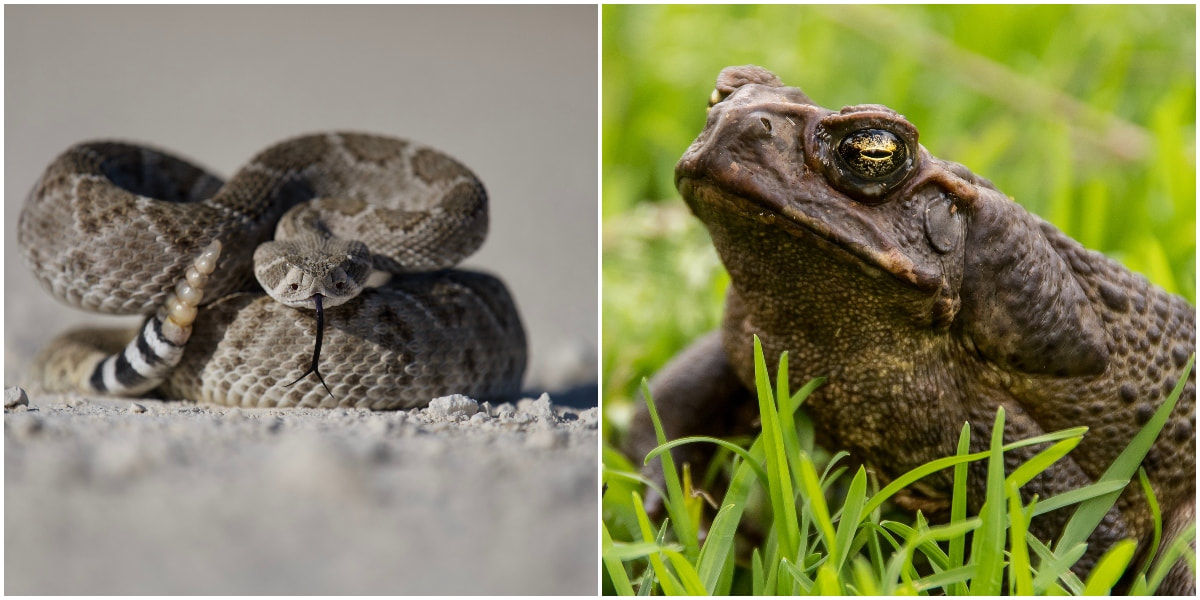|
I see it all the time, people refer to snakes and other venomous creatures as "poisonous" -- in fact, I recently saw it written on an official wildlife sign at a rest stop in Florida. While the two terms are often used interchangeably, they don't really mean the same thing and shouldn't be used as such. So, what's the difference between Florida's venomous and poisonous animals?
A common misconception is the belief that venomous animals are poisonous. This can lead to confusion when people talk about certain creatures' ability to inflict harm on humans. The two terms, however, do not mean the same thing and understanding their definitions can help clear up some of the confusion surrounding them. Here are Google's definitions of the two terms: Poison: a substance that is capable of causing the illness or death of a living organism when introduced or absorbed. "he killed himself with poison" Venom: a poisonous substance secreted by animals such as snakes, spiders, and scorpions and typically injected into prey or aggressors by biting or stinging. "snake venoms have different effects" In super simple terms, poisonous animal produces toxins within its body while a venomous one injects the harmful substances into other animals' bodies through glands in their mouths or claws. Poison is something you don't want to eat or have absorbed through your skin (this can be anything from organic heavy metals to man-made chemicals, wild berries, etc., and doesn't have to come from an animal) whereas venom only comes from living organisms and it's a toxin you wouldn't want to have injected under your skin. Typically, ingesting venom isn't harmful as long as it doesn't reach your blood stream. Venomous animals produce toxins within glands located in their bodies, which they then use to either immobilize or kill their prey before eating it. For example, one of the most venomous spiders in North America is the black widow spider, which gets its name from its physical attributes and tendency to bite humans who disturb them. This spider injects a neurotoxin into your body when it bites you that affects your nervous system. Most healthy adults can survive this type of bite if they get medical attention quickly enough. Poisonous organisms, on the other hand, need only come into contact with your skin or be eaten by you for them to make you sick or act as a poison within your body (like what happens after you eat toxic mushrooms or touch poison ivy). That said, some animals can be both poisonous and venomous -- though this is very, very rare. Here's an excerpt from the Orlando Science Center that expands on this topic: "Rhabdophis keelback snakes are both venomous and poisonous – their poisons are stored in nuchal glands and are acquired by sequestering toxins from poisonous toads the snakes eat. Similarly, certain garter snakes from Oregon can retain toxins in their livers from ingesting rough-skinned newts." Florida's venomous creatures include: Insects:
Snakes:
Spiders:
Stinging Caterpillars:
Marine animals: (Vertebrates)
(Invertebrates)
Poisonous animals in Florida are relatively rare and often cause mild symptoms if ingested by humans (the Cane Toad is a good example), but poisonous plants in Florida are very abundant and should be avoided. If you want to know more about Florida's creatures to avoid, click here!
0 Comments
Your comment will be posted after it is approved.
Leave a Reply. |
CATEGORIES |
|
|
Vertical Divider
|
Can't get enough?Uncover more of Florida through our channels below!
|
© COPYRIGHT 2015. ALL RIGHTS RESERVED.


 RSS Feed
RSS Feed